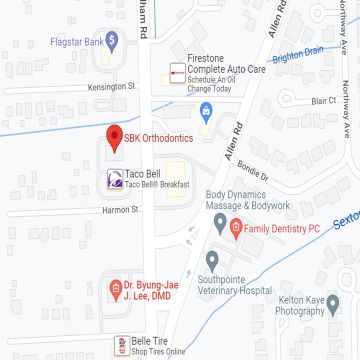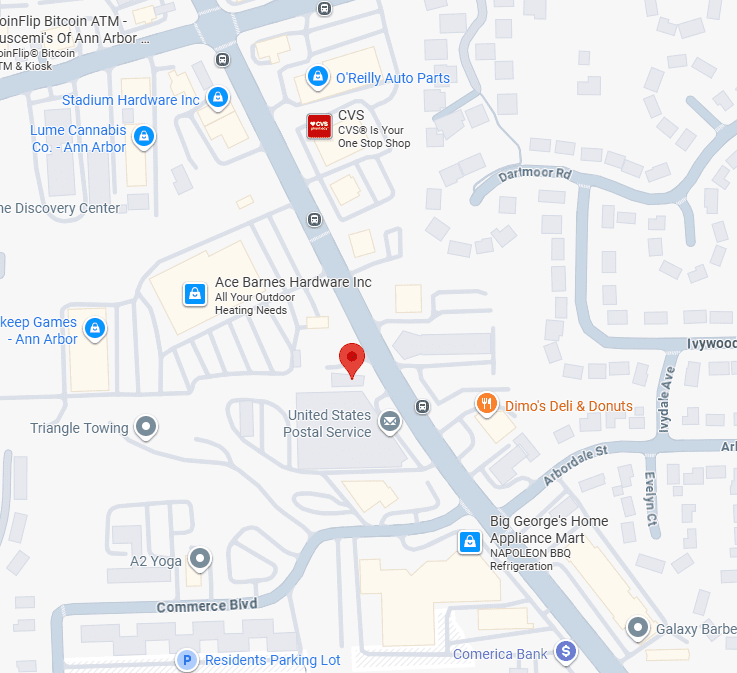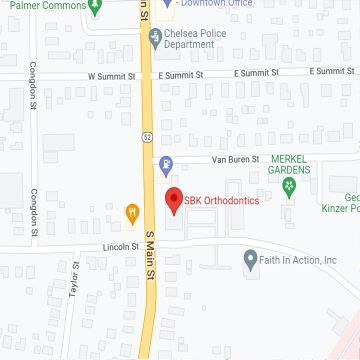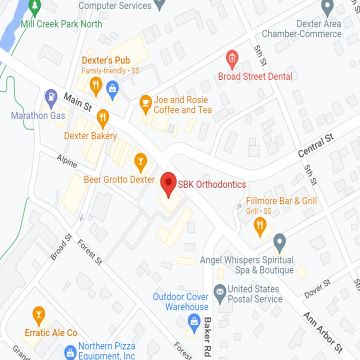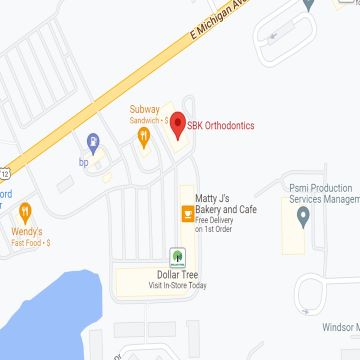
True orthodontic emergencies are rare, but when they occur we are available to you.
As a general rule, you should call our office when you experience severe pain or have a painful appliance problem you can’t take care of yourself. We’ll be able to schedule an appointment to resolve the problem.
You might be surprised to learn that you may be able to solve many problems yourself temporarily until you can get to our office. If there is a loose piece that you can remove, put it in a plastic bag or envelope and bring it with you to your next appointment. If your braces are poking you, put soft wax on the piece that’s sticking out. If the wire has slid to one side, you can pull it back to the other side with needle-nosed pliers, replacing it in the tube on the back tooth.
After alleviating your discomfort, it is very important that you still call our office as soon as possible to schedule a time to repair the problem. Allowing your appliance to remain damaged for an extended period of time may result in disruptions to your treatment plan.
GENERAL SORENESS
When you get your braces on, you may feel general soreness in your mouth, and teeth may be tender to biting pressures for three to five days. Stick to a soft diet until your teeth do not hurt to chew. Irritated gums and other sore spots can be relieved by rinsing your mouth with a warm salt-water mouthwash. Dissolve one teaspoonful of salt in eight ounces of warm water, and rinse your mouth vigorously. If the tenderness is severe, take Acetaminophen (Tylenol) or whatever you normally take for headache or similar pain. Aspirin, Ibuprofen (Motrin, Advil) and Naproxen Sodium (Naprosyn, Anaprox) actually slow the tooth movement, so it is not advisable to use them frequently while wearing braces.
The lips, cheeks, and tongue may become irritated for one to two weeks as they learn a new posture and become accustomed to the surface of the braces. You can put wax on the braces to lessen this. We’ll show you how!
HEADGEAR
Sometimes discomfort is caused by not wearing the headgear as instructed by your orthodontist. Please refer to the instructions provided by your orthodontist. If the facebow (metal piece) is bent, please call our office for assistance. The headgear should hurt less the more it’s worn, so be sure you get in the prescribed number of hours.
LOOSE APPLIANCE
If your appliance is poking you, place wax on the offending part.
LOOSE BRACKET
If your bracket or band is still attached to the wire, you should leave it in place and put wax on it if needed for comfort. If the bracket or band can be removed easily, place it in an envelope and save it to bring to your next appointment.
LOOSE WIRE
Using a pair of tweezers or needle-nosed pliers, try to put your wire back into place. It is okay to use a piece of floss to tie the wire into place: tie the floss around the bracket in place of the missing colored o-ring. If you cannot put the wire into a comfortable position, and covering the end with wax doesn’t help, as a last resort use a small fingernail clipper to clip the wire behind the last tooth to which it is securely fastened. If the end of the wire is still sharp place wax on it.
POKING WIRE
Using a pencil eraser, push the poking wire down or place wax on it so that it is no longer poking.
"*" indicates required fields
FAQ
What is considered an orthodontic emergency?
You should get some emergency orthodontic treatment in Ann Arbor, Chelsea, Dexter, Saline, and Taylor, MI, when you have problems with your orthodontic appliances. Some of the common situations include loose brackets, poking wires, mouth sores, and lost aligner trays.
Is a broken bracket an emergency?
Yes. If you have a broken bracket, you have might want to get help from an emergency orthodontist. There are still some DIY solutions, but you should get in touch with our office to get better directions and set an appointment.
What do you do when your braces bracket falls off?
Fortunately, if your bracket is loose and is sliding on the archwire, you can just push it into the right place with a blunt object (even a pencil eraser). If a bracket fully comes off, make sure you recover the piece to avoid the risks of swallowing it and contact your emergency orthodontist.
When should you go to SBK Orthodontics for orthodontic emergencies?
Contact our emergency orthodontist as soon as you feel something odd with your braces or aligner. Anything related to a wire that pokes the side of your cheeks, mouth sores, loose or broken brackets, and more situations that alarm you. It’s better to be safe than sorry.
What is the most common orthodontic emergency?
The most common orthodontic emergency might be a broken or loose bracket because many patients like to eat foods that can damage their braces. A close second is a lost aligner or retainer tray because many patients forget their case and accidentally throw away their trays during mealtimes.
How to avoid orthodontic emergencies?
The first and most important recommendation to avoid the need for an emergency orthodontist is to avoid foods and drinks that can damage your braces. You should also use a mouthguard if you practice contact sports, and investing in some orthodontic wax can minimize the appearance of mouth sores.




